Tilting at windmills not allowed today – Don Quixote would be busy here fighting off all the Giants (windmills) at Kinderdijk.
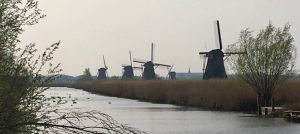
Kinderdijk is a group of 19 monumental windmills (they once numbered close to 150) in South Holland. Our bus from the boat took about an hour to arrive but the ride was enjoyable with our guide pointing out significant items along the way – thatched roof homes, locations of the original dikes and historic buildings.
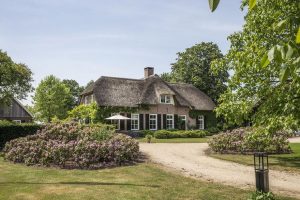
The various windmills were built in the early 1700’s (1738 or so) and were designed to drain this flood-prone patch of polder (reclaimed land once under water) keeping water out of the area.
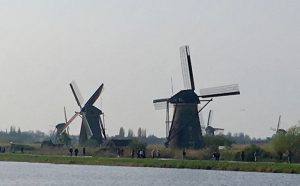
This is the largest concentration of old windmills and one of the best-known tourist sites. When we arrived it was windy and a bit chilly but beautiful. Yes, there were some other folks but generally not as crowded as I might have expected. The location of these windmills are at the confluence of the Lek and Noord rivers. As early as in the 14th century the first reclaimed land had been settled. With the use of windmills to pump the water “up” and over dikes the area of the Netherlands has just about doubled by reclaiming land from the sea. While flooding is very much an issue, the windmills are not the primary pumping sources anymore what with modern pumping stations taking the load.
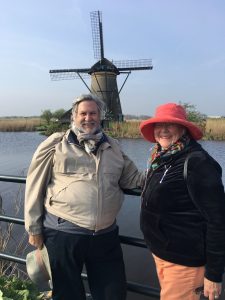
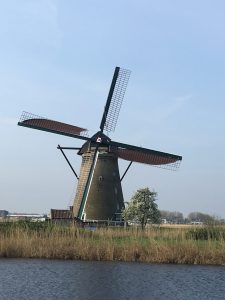
Over the years, windmills have decreased in importance but still provide assistance should the need arise to pump water “out”. Windmills actually come in two configurations – pumping of water and grinding of grains. All 19 of the windmills that are part of this World Heritage site are still operational, which equates to a necessary 60,000 revolutions of the sails every year; many have been handed down from one generation to the next and are privately owned.

Our visit included a tour of a water-pumping mill, Museummolen, while in operation.
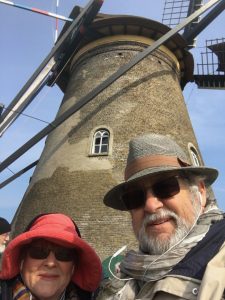
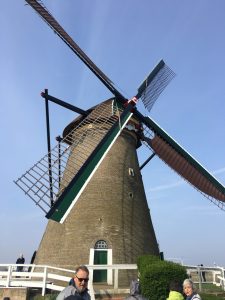
Of course, in the day, it was no simple task operating by hand those windmills. It was usually a family affair, with upwards of a dozen children (a handful were often lost during infancy, hence the high birth rate) providing the labor needed to run the mill and farm the reclaimed land.
According to the information provided, the children slept in every nook and cranny not devoted to the operation of the windmill.
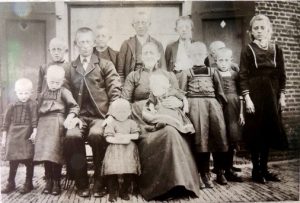
The babies usually slept with or near the parents. An alcove in the living room/kitchen served as the master bed.


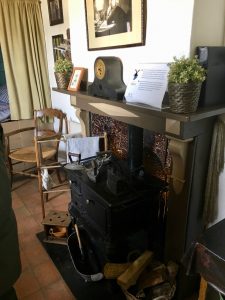
We caught a glimpse of the Dutch fortitude in the picture of the Hoek family, residents of the Museummolen in the early 1900s.
Miller Cees Hoek (1873-1957) was left a widower with 13 children in 1916 when his wife, Alie, was hit by one of the sails of the windmill while trying to save one of the children.
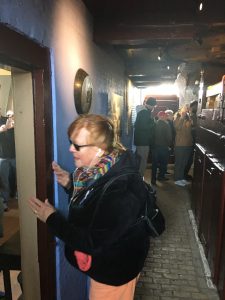
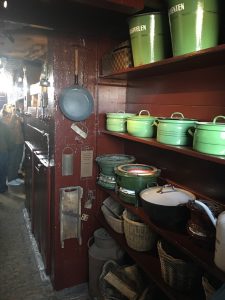
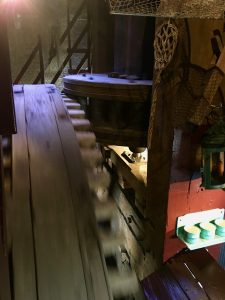
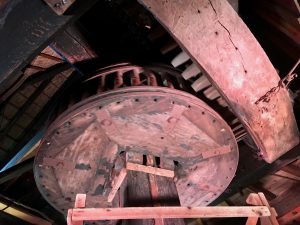
Water management in the area is now handled by the Overwaard pumping station courtesy of three giant diesel-driven Archimedes screws that are capable of moving 1.35 million liters per minute.
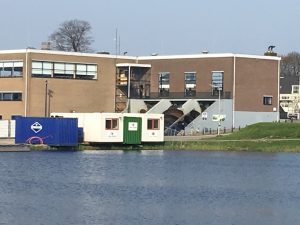

All in all a very interesting day spent learning about windmills and their operation.
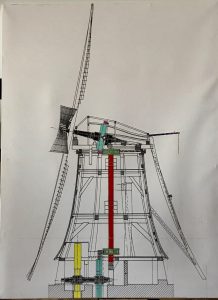
Your photos are wonderful. Jim and I visited this area in Fall 2017. Very special to be reminded so beautifully. Loved the photo of the Dutch (clogs) shoes on the wooden rack. B